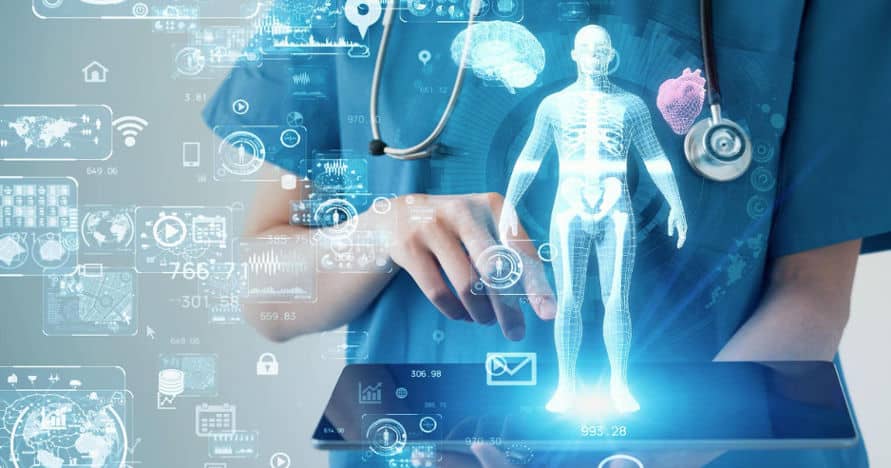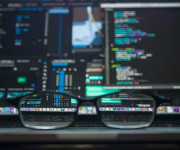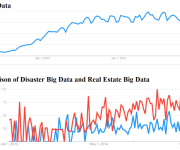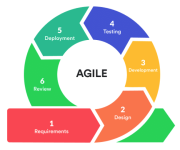How Computer Vision Detects What Radiologists Might Miss (And Yes, AI is Judging Your Bones)
Imagine sitting in a cold hospital room. You’ve just had your X-ray done. The technician nods, tells you the radiologist will take a look, and you’re left waiting, hoping someone with years of training will catch what’s important.
Now imagine a machine silently reviewing your scan in parallel. No sighs. No coffee breaks. No Friday fatigue. Just pattern after pattern being analyzed at inhuman speed.
Sounds like the opening of a sci-fi flick where machines eventually rise up and start diagnosing people at Starbucks. But really, it’s just another Tuesday in healthcare.
Let’s talk about computer vision in healthcare —specifically how it’s helping radiologists catch what even the sharpest human eyes might miss.
The Human Eye Is Good. But Tired Eyes? Not So Much.
Radiologists are brilliant. Let’s start there. They’re trained for years to spot the tiniest irregularities in medical images. A dot here, a shadow there—that’s all it takes to change someone’s diagnosis.
But here’s the kicker: radiologists are human.
They work long hours, often reviewing hundreds of scans a day. And while they’re excellent at what they do, they’re not immune to fatigue. Or cognitive overload. Or the kind of existential dread that sets in at 3 PM when your inbox still has 27 unread studies.
This is where AI comes in—not with flying cars or glowing red eyes, but with computer vision models trained on thousands (sometimes millions) of medical images.
These models don’t blink. They don’t miss lunch. They don’t second-guess themselves.
How It Works (Minus the Buzzwords)
Computer vision is basically machine learning’s visual cousin. It teaches machines to “see” and recognize patterns in images. Think of it like a robot playing Where’s Waldo, but instead of looking for a dude in a red-striped sweater, it’s looking for tumors, fractures, or fluid buildup.
Here’s a quick breakdown:
- An X-ray or MRI is taken.
- The image is processed by a computer vision model.
- The model flags potential issues, highlights areas of concern, and even provides a likelihood score.
- The radiologist reviews the AI’s findings alongside their own.
It’s not replacing anyone. It’s more like a super-focused intern that never sleeps and doesn’t talk too much in meetings.
The Surprising Stuff AI Finds
Now let’s get to the juicy part—what the machines are catching that we sometimes don’t.
- Lung Nodules
These tiny little troublemakers can easily hide in the shadows of ribs or blend in with surrounding tissue. Studies have shown AI can flag nodules that some radiologists miss on first glance. - Fractures
Wrist fractures. Rib cracks. Tiny bone breaks that are hard to spot. AI is excellent at catching these when fatigue might make a human gloss over them. - Breast Cancer Detection
Some mammogram patterns are so subtle that even seasoned pros can miss them. AI models trained on thousands of historical scans can pick out early-stage indicators more consistently. - Pneumonia & COVID-19
Remember during the pandemic when everything blurred into one endless Zoom call? AI was quietly helping spot early signs of pneumonia in chest X-rays—often before symptoms became serious.
So, yes, the machines are helpful. Not creepy helpful. Just helpful-helpful.
Radiologists Aren’t Being Replaced. They’re Being Supercharged.
Let’s shut down the sci-fi drama for a second.
Computer vision isn’t here to steal jobs. It’s not lurking behind radiologists with a virtual scalpel, whispering, “I’ll take it from here.”
Instead, it acts like a double-check system. Kind of like autocorrect, but useful. And far less annoying.
Here’s how:
- Speed: AI reviews scans faster. That means patients get results sooner.
- Accuracy: When paired with a human expert, error rates drop. That’s not scary—that’s helpful.
- Focus: With repetitive tasks handled by machines, radiologists can concentrate on the complex stuff.
It’s a good deal. No hostile takeover required.
But Wait, Machines Make Mistakes Too
Let’s not pretend the machines are perfect. They’re trained on data. If the data is biased or limited, the results can be off.
A model trained mostly on one type of population might miss variations in another. So, while computer vision can spot things faster and sometimes better, it still needs human supervision.
Think of it as working with a very confident intern—great energy, impressive results, but not quite ready to sign off on its own just yet.
The Real Humor? Humans Still Win.
Here’s the funny bit.
Even with all the computing, modeling, pattern-matching, and automated brilliance, you still need a human to decide what it all means. Machines are fantastic at pointing. But they don’t explain. They don’t contextualize. They don’t have a gut feeling.
They just beep and blink and wait.
The actual diagnosis? That’s still a human decision. And probably will be for a while.
Because patients aren’t just pixels on a screen. They have stories, symptoms, histories, weird questions, and sometimes three unrelated conditions that confuse even the best software.
Will AI Get Smarter Than Humans?
It already is—in very specific, narrow ways. Just like your calculator is better at math than you, and your GPS is better at directions (unless it tells you to take a left into a lake).
But being better at one task doesn’t mean being better overall.
Computer vision in healthcare is one of those rare places where human and machine actually make each other better. The machine doesn’t need to understand feelings. It just needs to be thorough. The human doesn’t need to zoom in on 1,000 images. They just need good input.
Put those together, and you get faster diagnoses, fewer misses, and better patient outcomes.
Final Thoughts (And No, AI Didn’t Write This)
Computer vision in healthcare is real. It’s smart. It’s getting better. But it’s not magic.
It’s a tool. A really good one. Like an MRI machine or a stethoscope. Just… with more math.
Radiologists still matter. Probably more than ever. Because now they have help. Quiet help. Tireless help. Help that doesn’t take lunch breaks or forget its glasses.
So, the next time you get an X-ray, remember—somewhere out there, a machine might be looking at your image too. And it’s judging every bone in your body. Nicely. Professionally. Quietly.
And if it finds something your radiologist might’ve missed?
Well, that’s just tech being techy.
























